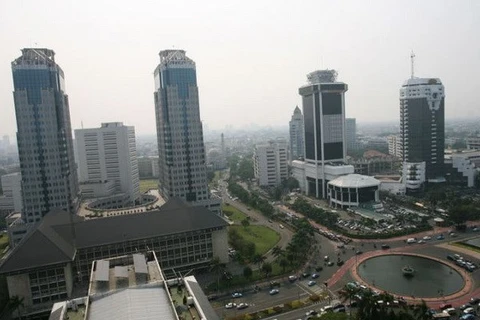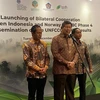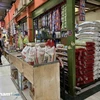Jakarta (VNA) – Indonesia recorded 3.26 billion USD in trade surplus in July, a nine-year high, as the export value reached 13.72 billion USD while imports were 10.46 billion USD.
Coordinating Minister for the Economy Airlangga Hartarto said recently that the July surplus was mainly influenced by improved export performance, particularly non-oil and gas exports, and reduced demand for imports of consumer goods.
Several commodities that contributed to exports in the industrial sector include precious metals, jewelry/gems, vehicles, iron and steel, as well as electrical machinery and equipment.
This means that Indonesia’s main export commodities are still highly competitive amid the decline in global demand as a result of the COVID-19 pandemic, the official noted.
Meanwhile, main import items include consumer goods (accounting for 10.63 percent of total imports last month), capital goods (18.79 percent), and raw/auxiliary materials (70.58 percent).
Imports of consumer goods experienced a decline in demand by 21.01 percent month on month to 1.11 billion USD, which is partly attributed to the success of the programme to increase the consumption of domestically produced goods.
The decline in imports of raw/auxiliary materials is also expected to provide opportunities for domestic industries/business actors to be able to supply them and take over the share of imports. Besides, the increase in imports of capital goods is a positive signal in line with the rise in the Manufacturing Purchasing Managers Index (PMI), which shows that production activity has also begun to increase, according to the Coordinating Minister for the Economy./.
Coordinating Minister for the Economy Airlangga Hartarto said recently that the July surplus was mainly influenced by improved export performance, particularly non-oil and gas exports, and reduced demand for imports of consumer goods.
Several commodities that contributed to exports in the industrial sector include precious metals, jewelry/gems, vehicles, iron and steel, as well as electrical machinery and equipment.
This means that Indonesia’s main export commodities are still highly competitive amid the decline in global demand as a result of the COVID-19 pandemic, the official noted.
Meanwhile, main import items include consumer goods (accounting for 10.63 percent of total imports last month), capital goods (18.79 percent), and raw/auxiliary materials (70.58 percent).
Imports of consumer goods experienced a decline in demand by 21.01 percent month on month to 1.11 billion USD, which is partly attributed to the success of the programme to increase the consumption of domestically produced goods.
The decline in imports of raw/auxiliary materials is also expected to provide opportunities for domestic industries/business actors to be able to supply them and take over the share of imports. Besides, the increase in imports of capital goods is a positive signal in line with the rise in the Manufacturing Purchasing Managers Index (PMI), which shows that production activity has also begun to increase, according to the Coordinating Minister for the Economy./.
VNA

























